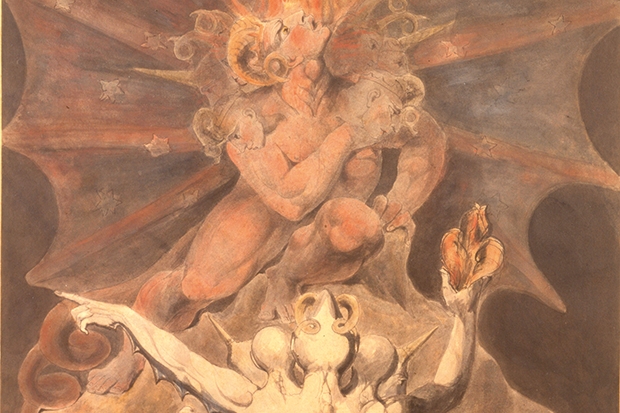At the heart of the eschatological ideology of the Islamic State is the belief that when the world ends (and the world ending is a good thing in their estimation) the final conflagration will take place in northern Syria, in an unremarkable town called Dabiq (which Isis presently occupy). It is here that the Armies of Rome will combine forces against the Armies of Islam, and the Armies of Rome will be defeated. Other significant details include the appearance of a mahdi (a messianic leader) and a dajjal (an anti-messiah) whom Jesus (Islam’s second greatest prophet) will return to earth to destroy, thereby (perhaps somewhat bizarrely from a western perspective) leading the forces of Islam to victory. Apocalypses, it seems, are a fashion perennial. They never go out of style.
How timely, then, that in their deliciously prescient and yet extraordinarily civilised book Picturing the Apocalypse, father and daughter team Anthony and Natasha O’Hear should really get to grips with all things apocalyptic by dint of applying a beautifully polished magnifying glass to the world’s ur-apocalyptic text, Revelation (the final, most slavishly read — and most violently contested — of the 66 books of the Bible). Love it or loathe it, Revelation has, throughout the past 2,000 years, ineluctably shaped the way we like to understand the end of things (because every satisfying narrative — be it our relationships, our careers, our families, our fictions, and especially our faiths — always requires a beginning, a middle and an end to attain a sense of true coherence, even — dare we hope? — transcendence).
The O’Hears argue cogently that because of its visionary (and therefore inherently visual) origins, this savage and challenging last book of the New Testament is often best understood (or decoded) through the work of the world’s artists.
Sound simple? It isn’t. Because just as soon as the reader starts to try to grasp the meaning of Revelation (the book, the vision) it suddenly transmogrifies into a shifting sand of rapidly overturned and overturning certainties. But do not fret; the O’Hears will quietly guide you through the fascinating maze of unknowns, symbols, mysteries and conundrums that surround this ancient book, firing off with the startling fact that Revelation isn’t the work of St John the Evangelist. It transpires that John the Elder was its actual author and wrote Revelation after a series of visions while in exile on the Greek island of Patmos (c. AD 70, just after the sacking of Jerusalem).

Horseman of the Apocalypse, (1377–1382)
Revelation has always been a problematic text. It was not welcomed into the Bible by the ancients without a measure of rancour and unease. Even the very language of the Apocalypse (the concept of an Antichrist, the meaning of Armageddon) can’t be taken as read. So plenty is up for grabs here. But the O’Hears are scrupulously fair-minded and reasonable. They are inclusive. They are erudite (a healthy sprinkling of ‘eschatons’ and ‘macro-narratives’ litters the text) but never intimidating.
They assess how Revelation has been deployed throughout history as a political device, but do so in a cheerfully non-judgemental way. They are kind. They are measured. And this is what makes Picturing the Apocalypse such an engrossing, delightful and ultimately uplifting read. The brief musical sections are especially engaging, as is the authors’ gentle theorising about that so-called ‘paradox of Christianity’ — the Lamb. This curious and tender symbol of suffering and redemption at the core of the Christian message has been oddly underplayed throughout cultural history (when compared to, say, the Four Horsemen of the Apocalypse and the Whore of Babylon). The O’Hears use an exquisite plate by Blake — ‘The Number of the Beast is 666’ , reproduced on the previous page — to drive this point home, and as the reader looks at it, seeing the lamb hidden, almost invisible — quite overlooked — between a series of hulking, bestial torsos, it’s impossible not to ponder the deeds of Isis and their wholesale destruction of cultural artefacts.
Perhaps if one lesson alone might be learned from the O’Hears’ thoughtful and thought-provoking enterprise, it’s that beauty (and, by extension, art), while in some senses perfectly defenceless, can never fail to bring us closer to the sublime.






Comments